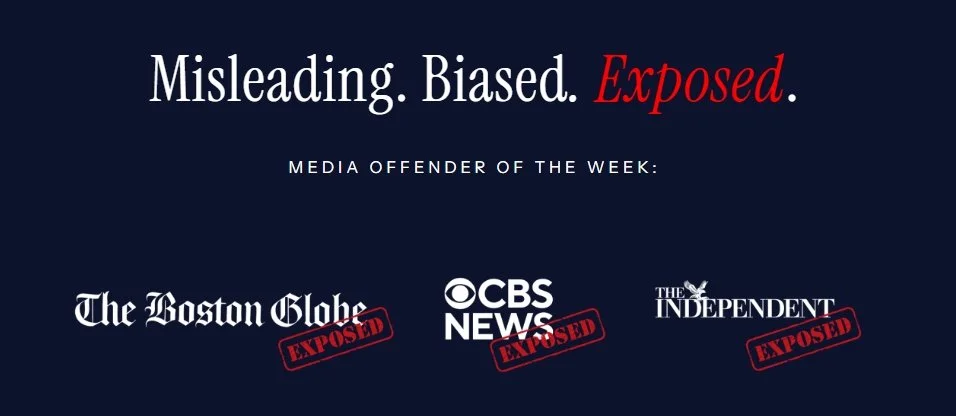The Fragility of Morality
Humanity has often wrestled with the question of whether people are fundamentally good or evil. Even a cursory glance at history reveals astounding acts of cruelty—genocide, war, exploitation—that repeat like a grim chorus across civilizations. At the same time, certain scientific and philosophical perspectives celebrate humans as cooperative, empathetic, and prosocial beings. The tension between these viewpoints grows starker when we consider that much of the “humans are basically good” argument relies on research with narrow samples, often drawn from privileged or controlled environments, and frequently relying on self-reported data that can be notoriously unreliable. When confronted with large-scale atrocities, abuses of power, and the pervasive capacity for violence, one cannot help but question how deep or stable this so-called “basic goodness” really is. If it exists at all, it seems frighteningly fragile; dependent on conditions that vanish the moment power, wealth, or fear exerts its pull.
The Myth of ‘Basic Goodness’ and the Problem of Self-Report
Modern psychology and social science have contributed substantial evidence suggesting that humans have innate tendencies toward empathy, fairness, and cooperation (Baumeister, 1997). Infants, for instance, show rudimentary signs of empathy and distress when exposed to another’s suffering (Freedman, 1974). Yet, these examples often derive from controlled laboratory settings or specific cultural contexts, which are rarely representative of humanity at large. In many of these studies, participants come from academic settings where they face minimal personal risk and little to gain by exploiting others. Under such conditions, it’s not surprising if they demonstrate prosocial behaviours.
Complicating matters is the widespread reliance on self-report methods—questionnaires, interviews, and surveys in which people describe their own moral or prosocial attitudes. Social desirability bias leads individuals to paint themselves in a flattering light, whether consciously or not. In a society that prizes altruism, justice, and empathy, it becomes socially advantageous to present oneself as caring and cooperative. Even in private or anonymous survey conditions, people internalize cultural norms about what is considered “good,” and may shape their responses accordingly.
What emerges is an essentially artificial portrait of humanity, formed under conditions of low threat and minimal temptation, where individuals can afford to be magnanimous—or at least claim to be. We see a curated version of ourselves, one that fails to capture the harsh realities of life outside the laboratory. This contrived “basic goodness” stands in stark contrast to historical records of pillage, colonial exploitation, slavery, and genocide—all executed not by solitary monsters but by ordinary people, often operating within robust social systems that encouraged, justified, or mandated these actions.
Power, Wealth, and the Corrupting Force
Fear and desperation have long been recognized as potent triggers for human cruelty. Thomas Hobbes (1651) famously argued that in the “state of nature,” with no overarching authority to enforce social contracts, life would be “nasty, brutish, and short.” When faced with mortal threats, humans can commit acts of violence and self-preservation that obliterate moral imperatives. Yet, fear is not the only driver of evil. History abounds with cases in which individuals and groups, secure in their power and wealth, inflicted suffering on others for the sake of greed, sadism, or the sheer exercise of dominance.
The transatlantic slave trade, orchestrated by wealthy merchants and aristocrats, is a prime example of cruelty fueled by economic gain rather than existential fear. Millions of people were uprooted, dehumanized, and subjected to inhumane treatment. Profits outweighed moral considerations; the powerful seldom paused to reflect on the human cost of their endeavors. Similar patterns can be observed in corporate exploitation today. Corporations with enormous resources sometimes engage in practices—child labor, sweatshops, environmental destruction—that systematically harm vulnerable populations. The perpetrators may never see their victims face to face, rendering empathy an abstract luxury rather than a lived necessity.
In these scenarios, moral frameworks are not undone by chaos or desperation. Instead, they are quietly subverted by a system in which the material benefits of wrongdoing outweigh the perceived costs, and in which accountability is uncertain or absent. The capacity for empathy remains dormant while self-interest and convenience reign supreme.
The Banality of Evil and the Limits of Individual Character
Hannah Arendt’s (1963) notion of the “banality of evil” was her attempt to make sense of how ordinary bureaucrats, without any particular sadistic bent, could facilitate monstrous acts like the Holocaust. Through her examination of Adolf Eichmann’s trial, she observed that unspeakable atrocities can emerge from mundane, even thoughtless, conformity and careerism. People do not need to be overtly malicious if the social or organizational structure allows—or rewards—actions that inflict harm.
This idea received further empirical support from Stanley Milgram’s (1963) obedience experiments, in which participants, guided by an authority figure, administered (what they believed to be) painful electric shocks to strangers. Many participants complied even as they heard the recipients’ desperate screams. Philip Zimbardo’s Stanford Prison Experiment likewise showed that ordinary college students could quickly adopt abusive roles when placed in a context of unrestrained authority (Zimbardo, 2007).
Such findings challenge the notion that moral integrity is deeply rooted in every individual. Instead, they hint that everyday morality depends largely on external structures and credible accountability. People may behave decently if society strongly encourages it and enforces consequences for deviance. However, when societal or institutional frameworks change when cruelty is normalized or rewarded, many individuals adapt to those new norms with alarming ease.
The Fragility of Morality Under Strain
Even if we concede that humans have some innate prosocial tendencies, the evidence suggests that these tendencies are precarious. Certain factors must remain stable for moral behaviour to flourish:
Accountability: If people believe they will be punished for harming others, they are more likely to keep their aggressive or exploitative impulses in check. If the mechanisms of justice fail—or if one’s power places them above reproach—moral inhibitions can quickly dissolve.
Empathetic Connection: Direct, face-to-face engagement fosters empathy. Distance, whether physical or psychological, weakens this connection. The more abstract the harm—such as distant sweatshop workers or displaced communities from environmental damage—the easier it is to suppress empathy.
Cultural Norms and Narratives: Societies can cultivate narratives that value compassion and mutual respect. Conversely, propaganda and dehumanizing rhetoric can quickly transform neighbors into adversaries. The Rwandan genocide of 1994, driven by a radical shift in how one ethnic group was portrayed, is a stark demonstration of how quickly social narratives can turn lethal.
Resource Stability: Scarcity, or even the perception of scarcity, can breed competition and distrust. When people believe resources are limited, they may resort to unethical behaviors to secure what they need—or desire—at the expense of others.
In many parts of the world, these conditions are anything but stable. Political corruption undermines justice systems; global capitalism creates vast disparities of wealth; social media fosters echo chambers that normalize hateful or demeaning language against out-groups. Under such circumstances, moral frameworks seem like delicate veneers, easily shattered.
War, Genocide, and Collective Darkness
Nowhere is the fragility of moral behavior more evident than in systematic acts of violence at scale—war and genocide. Historian accounts of atrocities highlight the horrifying ease with which communities turn on each other under the right (or, more accurately, wrong) conditions (Baumeister, 1997). Economic instability, entrenched prejudice, charismatic leaders espousing bigoted ideologies: these forces can combine to dismantle centuries of cohabitation in a matter of months.
Ordinary individuals, who under stable conditions might have remained benign or apathetic, become active participants in murder and rape or else complicit bystanders who refrain from intervening. Morality, it appears, is overshadowed by tribal loyalty, fear of retribution, or the lure of material gain—looting, property seizure, or career advancement in a new political order.
The harrowing accounts from the Holocaust, the Rwandan genocide, the Bosnian war, and countless other conflicts show not just that evil exists but that it can arise with disconcerting speed. Even societies that pride themselves on progress and enlightenment can devolve into barbarity when the right catalysts emerge. This cyclical pattern of violence across history challenges any rosy narrative that humans are collectively moving toward greater moral enlightenment.
Self-Deception and the Illusion of Good Intentions
One of the darker twists is humanity’s remarkable ability to justify its own cruelty. Through a process of psychological and ideological maneuvering, individuals or groups often rationalize harmful actions as necessary, or even morally justified. Genocidal regimes label their victims as “vermin” or “threats,” thus recasting murder as a defensive necessity. Colonial powers claimed they were “civilizing” conquered lands, recasting theft and enslavement as benevolent paternalism.
In everyday life, less extreme examples abound. Individuals justify exploiting low-wage labor by telling themselves it creates jobs in poor regions, or they minimize the severity of environmental harm by pointing to hypothetical future solutions. The ability to self-deceive allows people to maintain a positive self-image while continuing harmful behaviors. Psychologically, it is simpler to recast oneself as righteous than to confront complicity in collective or individual evil.
This self-deception serves as a powerful shield against guilt. It might be one reason self-report studies so often fail to capture the extent of human capacity for harm. If people genuinely convince themselves they are doing good—or that their complicity is inconsequential—surveys and interviews that rely on personal honesty become practically useless as measures of genuine moral character.
The Narrow, Fragile Space for Moral Behavior
Putting this all together, it becomes difficult to argue that humans are “basically good” in any deep or inherent sense. Instead, moral behavior seems to flourish only within narrow confines: stable resource distribution, robust accountability, strong cultural norms against violence, and meaningful empathy connections. Disrupt any one of these factors, and cruelty often emerges as a viable or even appealing option.
This is not to discount the genuine kindness and heroism many people display, sometimes risking their lives to protect strangers. But heroism stands out precisely because it runs counter to the prevailing tide of expediency and fear. If altruism and goodness were truly common or effortless, we would not celebrate heroes so fervently—they would be ordinary. Instead, they are exceptional.
Societies attempt to institutionalize morality through legal systems, religious precepts, ethical codes in professions, and cultural rituals that valorize compassion. Yet, these institutions are vulnerable to corruption and subversion. Wealthy or powerful individuals find loopholes, exploit local or global inequalities, and accumulate influence that places them above the law. Oppressive regimes rewrite moral codes in their favor. The very constructs designed to keep morality intact become tools for further harm.
The Internet: A Laboratory for Moral Fragility
The digital world offers a near-perfect environment to observe the fragility of human morality. The same forces that shape human cruelty and self-deception in the physical world are amplified online, where accountability is diluted, empathy is abstracted, and performative goodness becomes a competitive sport.
Performative Virtue and the Glorified Self
Social media platforms are, in many ways, digital mirrors reflecting the idealized versions of ourselves. People curate their online presence with careful attention, showcasing charitable actions, progressive views, or empathetic responses — often in exaggerated form. Every post, comment, or share is a public self-report, designed to maximize social reward. This creates an ecosystem where moral posturing outpaces moral substance. What emerges is a collective fantasy of goodness: a vast, interconnected self-portrait in which individuals compete not to be good, but to appear good.
Yet, just as in laboratory studies, this self-reported morality occurs under conditions where real risk is minimal and consequences are almost nonexistent. Expressing outrage at injustice requires no sacrifice; retweeting a cause costs nothing; signaling empathy becomes a low-effort method of accruing status. Online, the self-deception described earlier becomes an art form, with entire communities reinforcing one another’s illusions of virtue.
Anonymity and the Unrestrained Monster
Alongside this performative morality exists its dark mirror: the anonymous monster. Distance — psychological, social, and geographic — is a crucial factor in diminishing empathy. The internet provides the ultimate distance. Behind usernames and avatars, individuals shed the constraints of their offline reputations. Accountability, already fragile in face-to-face interactions, nearly disappears.
The result is predictable. The same ordinary people who might offer politeness and restraint in person can become vindictive, cruel, and sadistic online. Cyberbullying, harassment campaigns, doxxing, and social pile-ons are not anomalies — they are the digital age’s equivalent of the “banality of evil.” Ordinary users, often with no overt malice in daily life, become participants in cruelty when social structures not only permit it but actively reward it with attention and collective approval.
Algorithmic Amplification of Tribalism and Cruelty
Perhaps most disturbingly, online platforms are not neutral hosts. Algorithms favor engagement, and engagement favors outrage, conflict, and tribal reinforcement. The social narratives you described — those that can pivot from empathy to dehumanization — shift at lightning speed online. Misinformation and dehumanizing rhetoric spread quickly, radicalizing users within self-reinforcing echo chambers. Nuance and compassion are punished with indifference or ridicule, while performative outrage and moral absolutism are rewarded.
Under these conditions, digital morality becomes a fragile facade. Platforms filled with declarations of kindness and justice also teem with cruelty and mob aggression, often from the very same users, toggling between public virtue-signaling and anonymous malice with alarming ease.
The Internet as an Accelerant
The internet does not corrupt otherwise pure moral beings. Rather, it exposes and accelerates the fragility of human morality already present. It creates the perfect storm:
Low accountability
High distance and abstraction
Incentivized self-deception
Rapidly shifting tribal norms
A system designed to reward extremes
In this environment, the veneer of human decency is thinner than ever. The moral fragility you see in history and psychology finds fertile ground in digital spaces, where the distance between glorified self-image and unrestrained cruelty is measured not in miles, but in keystrokes.
Simply Put
In light of the historical record, psychological experiments, and the persistent global disparities that incentivize exploitation, the claim that humans are “basically good” becomes difficult to sustain without heavy qualifications. Even the more moderate idea that humans are a mix of good and bad is only partially accurate, because the capacity for harm often appears to dominate when external constraints fail.
Morality seems less an immutable trait and more a precarious balancing act, maintained by social structures and enforced by collective agreements. Without these checks in place—if accountability falters, if empathy is undermined, if wealth and power remain unconstrained—our supposed “goodness” is easily overshadowed by self-interest, cruelty, and violence. Whether one views this as a tragic flaw or merely a pragmatic reality, it is a dark commentary on the human condition.
In the end, the fragility of morality calls for deep skepticism about utopian visions that rely on humanity’s inherent virtue. While acts of kindness and solidarity do exist—and can be profoundly moving—they do not erase the historical patterns of greed, violence, and oppression that continue in our present day. If anything, our capacity for moral lapses is likely to grow more perilous as global challenges such as climate change, artificial intelligence, and resource depletion place unprecedented strains on societies worldwide.
Those who hold onto a belief in human goodness may find themselves forced to acknowledge that their optimism rests on layers of stability and accountability that are anything but guaranteed. And when these fragile conditions erode, history suggests that humans can—and will—commit atrocities with astonishing ease, all the while rationalizing their actions as necessary or justified.
Such a worldview maybe bleak, but it forces us to confront the reality that morality is not an unassailable core of human nature. Instead, it is the thin veneer we cultivate within the narrow confines of social and material conditions that penalize cruelty and reward empathy. That veneer can crumble at any time, exposing a darkness that is no mere aberration, but an inescapable part of what it means to be human.
References
Arendt, H. (1963). Eichmann in Jerusalem: A Report on the Banality of Evil. Viking Press.
Baumeister, R. F. (1997). Evil: Inside Human Violence and Cruelty. W.H. Freeman.
Freedman, D. G. (1974). Human infancy: An evolutionary perspective. Lawrence Erlbaum.
Hobbes, T. (1651). Leviathan. Andrew Crooke.
Zimbardo, P. (2007). The Lucifer Effect: Understanding How Good People Turn Evil. Random House.















